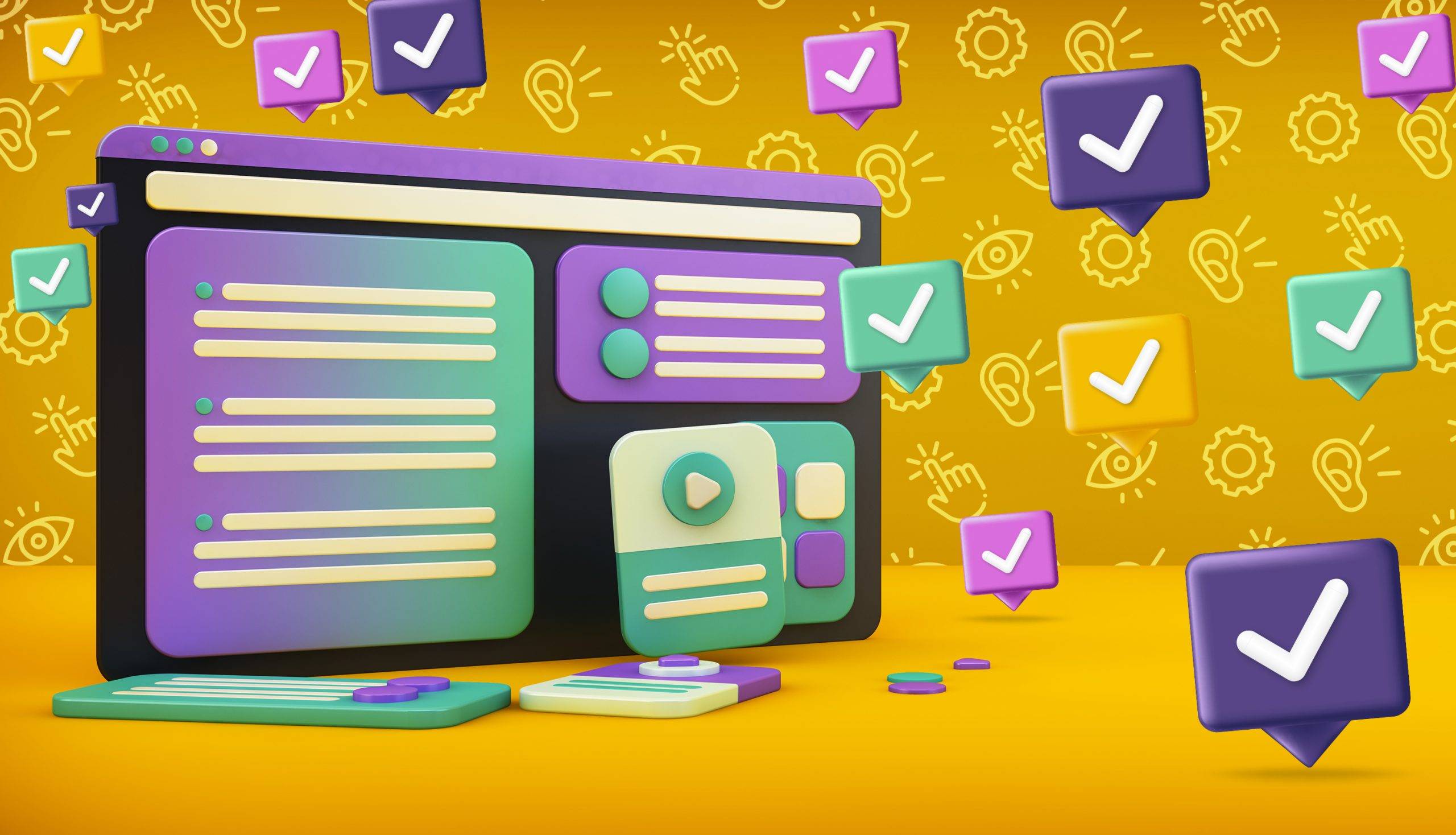
Many individuals, businesses, and organizations have recently migrated to WordPress as a blogging tool. It has become a popular platform for many reasons: it is widely accessible, customizable, and easy to use. If you want to take advantage of the latest in modern web technologies, use WordPress and HubSpot together. The combination of WordPress and HubSpot can be a great way to level up your online marketing game, enabling you to engage with users in an ongoing manner successfully. It also allows you to populate your blog with great content easily. Here are different ways that you can use WordPress and HubSpot Together
HubSpot Webforms
A valuable way to use WordPress and HubSpot Together is to integrate HubSpot Webforms into your WordPress site. This allows you to collect data in various ways, including email addresses, contact information, project inquiries, etc. These web forms are a great way to engage with your audience before offering them valuable content, such as whitepapers or eBooks. Your users can then download the content they have expressed interest in on their own time. Users can subscribe to your email lists, which can be especially useful for businesses that want to stay in touch with customers or potential customers at the right times. This can also be a great way to increase the flow of leads by allowing users to submit questions, suggestions, requests, and recommendations while also allowing them to see what else is available on your site.
Content Creation with WordPress and HubSpot
HubSpot has a wide range of topic-specific tools which you can use to create content for your blog. You can connect your WordPress site and HubSpot in several ways. The easiest way is to use Cross-posting, where both platforms share the same post, but you can also create new posts on the HubSpot platform or edit existing posts in your WordPress site’s content management system. You may consider using the following tools Comments, Blog Comments, Email Newsletters, and Event trackers.
WordPress Email Service
If you have an email newsletter, a WordPress email service can be an excellent way to create a relationship with your audiences. Email is a great channel for sending content directly to readers and getting back to them. You should consider creating and tracking leads this way, as it is an efficient way to get information and potential customers who want your content. Email marketing and social media management platforms such as HubSpot also allow you to track when people open your emails. It helps you learn more about who you’re sending messages to, their expectations, and how much value they get from your marketing campaigns, all of which help improve the quality of your messages or inserts.
Importing Content from Your WordPress Site into HubSpot
This is an excellent way to get started with the combination of HubSpot and WordPress by importing content from your WordPress site. This can be done in different ways, but here are a few. You could upload new files directly into the HubSpot platform or use the import tool on the Dashboard itself. Once you’ve selected this option, you can choose which type of file it will be an image or a text file. You could also import your posts from WordPress into HubSpot in several ways, but using the “Import post” option on the content page for each post is the easiest.
Integrating Real-Time Collaboration with HubSpot and WordPress
This is a great way to create a connected and more efficient experience for your readers. When you have HubSpot Real-time Collaboration, you can direct people to your content by referring them to specific pages on your site. You can also send notifications to your readers when they are mentioned on the site, meaning you can track engagement at a much deeper level than ever before. If someone tweets something about the HubSpot blog, they will receive an email notification, or if someone comments on one of their posts – they will also receive an email notification. This will help you to be on the right track with your content and also track engagement.
Build Your Blog
If you’re a WordPress newbie, it’s easy to use WordPress. You don’t need special programming skills – you can add images and text to your blog and make it look exactly the way you want. Themes, plugins, and extensions are available for all users from any device or operating system. If you’re already a blogger, you may already know how to use the WordPress platform, which means that you can get started quickly with this solution. In addition, WordPress offers multiple free themes for your blog, which will help to make your blog look aesthetically appealing. You can also update quickly using WP-Editor, an editor for creating posts directly on your site in HubSpot.
Integrate App into WordPress
HubSpot has an application that can help you to create and customize your blog. This means that you can focus on engaging with your audience on the right platforms, using the right tools, and at the right time. You can use this app to manage your workflow and track performance for any content pieces you produce – whether in HubSpot or WordPress. You can also connect your HubSpot CRM directly to your WordPress site so that all your contacts, leads, and accounts are available from within the app. This integration allows you to update your HubSpot CRM from within your WordPress site, so you don’t have to input new data manually every time. It also enables the creation of a custom page within the app for each contact. The idea is that you can manage all your interactions with your customers and prospects on one page, making it easy for you to track what workflows are happening and where conversations are taking place.
WordPress and HubSpot are two of the biggest platforms you can use to create an online presence for your business. They are both valuable tools in their own right, but when you combine them, they become even more powerful. With HubSpot CRM and WordPress, the communication between customers and prospects is highly integrated and efficient. The combination of HubSpot and WordPress offers many different ways of using both platforms simultaneously from content distribution to content creation and various other possibilities.

Website content consists of information and media within websites. In combination, they engage viewers and draw them into interacting with your website. Website content doesn’t necessarily have to be text. In the 21st century, media of all kinds make up the content of webpages, and it takes hundreds of forms.
Brevity precludes naming all of them, so here are 10 fine examples of website content:
Articles
Articles, like this one, are text pages on certain topics of interest. They could be opinion pieces, product reviews, stories, analyses of events, or anything else that would be of interest to your target demographic. They can be of any length, but most often they are 1,000 words or less. They are also usually broken up into small paragraphs and als o generally have one or more subheadings to make them easier to read.
Blog Posts
Most blog posts tell a story, explain a process or product, or include commentary on current events. Instead of general, they are specific to the author of the blog or the company for which the author of the blog works. Blogs tend to be more informal than articles, but they still contain relevant information. Online diaries are a particularly personal form of blog where the person shares inner thoughts and feelings as well as experiences.
Surveys
Surveys ask viewers questions on a variety of topics. The owner of the survey wants to gather information about a topic, question, or set of preferences of a group of people. For example, a company that produces spaghetti sauce might want to roll out a new flavor, and the company would ask survey participants which of a suite of five different flavors they preferred. The winner, of course, would be the new flavor. Surveys don’t have to be business-oriented, however. Influencers could post a survey about which of their outfits look the best or other similar questions.
Quizzes
Quizzes are a fun way to get people interested in your webpage. They could be frivolous like the, “What kind of animal are you?” examples on Facebook, or they could truly test your knowledge about a relevant topic. Bloggers like to use quizzes to introduce their pieces on topics that interest them. They can be on any topic from testing your knowledge of grammar to current events.
Photos
Interactive content doesn’t have to contain the written word to be effective. Steve McCurry’s famous “Afghan Girl” photo is worth far more than the proverbial 1,000 words. It is, perhaps, the greatest single photograph taken in the last 100 years, the piercing and soulful eyes of the young girl searing the viewers’ psyche. It proves how powerful a still image can be. Not every photo has to be as Earth-shattering, however. Personal web pages are the 21st century’s answer to 1960s slide shows. You can show your latest vacation, party, or graduation to millions instead of just folks in your living room.
Videos
Even more immersive than still photos, videos can inform, tell stories, or give webpage owners the ability to muse, impart wisdom, or make viewers laugh. Vlogs are video blogs, and those who maintain them are vloggers. TikTok is a video platform where vloggers rule the roost. The short videos there can bring great fame and even fortune to those with the foresight and vision to provide the right kind of winning content.

BOTH internal and external links are used to convey extra information to readers and direct them to other sources. These internal links can redirect them to other pages that your website offers, like your “Home” and “Services” pages, whereas external links allow readers to access more information about the topic on another website. However, there comes a point in the SEO world where you can use too many of either type of link and lose website visitors and an optimal ranking in search engine optimization strategies.
Why Should You Add Links to Your Pages?
By adding links to your web pages, you increase your rank authority when it comes to SEO. Your pages will be more likely to appear at the top of a search with more links. Search engines, like Google or Bing, can build a reputation for your site and must evaluate your site’s context and why it should be relevant to what a user searches. Additionally, links, when you properly add them to your pages, can help visitors to easily access and view related pages and information.
Your website becomes more visible to the general public through SEO when you utilize links. If you are using external links, those should direct your visitors to authoritative websites, which means that these websites have a high SEO ranking, and search engines are able to trust them: they have valid certificates and do not pose potential security issues.
How Many Is Too Many?
In 2009, Matt Cutts, a former representative at Google, recommended having fewer than 100 links per page because if you were to add more, search engines can potentially penalize those pages. However, because of Google’s recent developments in advancing their web crawling capabilities, search engine web crawlers can index larger quantities of web pages at a time and structure them accordingly.
In SEO, each link has a PageRank, which means that if you have numerous links in a single page, the PageRank for each link becomes significantly smaller. Remember that these links provide the structure that search engines use to deliver results in search queries, and links with fewer references throughout your website will be less likely to show up on a search engine result page. However, if every web page links to every other web page, your website will not have a clear structure for search engines, and those search engines will not be able to easily distinguish the context of your website. Here are some other reasons why having too many links can be a potential issue for your SEO best practices in attracting visitors to your web pages and keeping them there.
Web Page Accessibility May Be Diminished
Web browsers provide context for links so that readers with accessibility needs are able to navigate a page. However, if there are too many links for assistive technologies to navigate, this can be frustrating for your reader who may want to explore the content that is essential to them. Links that you place in your web pages should have importance to them and be relevant to the topic.
In addition to providing possible issues for screen readers and other assistive technology, an abundance of links may pose a problem for users who mainly navigate a web page using their keyboard. They use the Tab key to navigate through every interactive element, such as a hyperlink or an input field in a form, on a page. Consequently, if there are too many links, your readers may become overwhelmed and leave your website.
In either of these cases, it is crucial that you provide a sufficient number of links for the content and context that you provide. For example, if you are providing a list of products or books, it is acceptable to provide many links, and readers with accessibility needs will be able to navigate to each link without a problem. However, if you place links randomly throughout your page without giving them context and an idea of what web page the links redirect to, it can be problematic for your readers and SEO strategies.
Your Web Page May Acquire Some Broken Links
When you hyperlink to either internal or external sources, there is the case that the link may redirect your readers to a dead end, which means that the page no longer exists or is temporarily unavailable. This can reduce your web page’s PageRank and authority when it comes to SEO. Furthermore, if you have many links, you have more links to maintain and keep track of, ensuring that they do not lead to 404 error pages.
It May Give Your Web Pages the Appearance of Being Spammy
Depending on your context, your website may look more like spam rather than a professional website, and readers could deem your website as untrustworthy and steer clear of it. If your web pages feature comments, be sure to monitor them and verify that they do not feature any spammy links – they are irrelevant to the content and context of the current web page. These spammy links can lead to potentially harmful sites that can deter your web pages from having a high PageRank and appearing at the top of a search engine result page based on a search engine’s website crawling algorithm.
Use caution when you put links in your web pages. You may give your readers the impression that your web pages are untrustworthy and spammy if they are not placed with the right context in mind. Keep your links relevant to the content and ensure that the descriptive text for each hyperlink relates to that individual hyperlink’s destination. For SEO, a search engine web crawler should always be able to index your pages and provide them with a PageRank and authority so that your website can have structure as a whole and not be buried in the depths of a search engine results page.

If you own a physical business, you know that you must do things to make that business accessible to everyone. While you do not have to worry about restrooms, entryways and parking spaces on your website, you still need to do things to make it ADA-compliant.
In 2022, there were over 11,450 lawsuits filed for not following Title III and section 508 of the Americans with Disabilities Act. Since you do not want your company tied up in federal court, ensure that you comply.
Use Alt Text
You must label all content on your site that is not text with alt text accurately describing the content. If you use multimedia or live presentations on your website, you must provide descriptive labels for that content. Furthermore, you must provide captions and a full transcript, including any interactions. The confirmation must be available in different formats if you require a user to confirm that they are a human. Finally, you need to take steps so that alternative readers know that they can ignore decorative texts.
Separate Content From Visual Layout
You cannot rely only on your site’s physical layout when you need people using your website to go in a particular order. You cannot rely solely on shape, size, visual location or component orientation. If you need users to input data, then you need to use metadata to show the purpose so that assistive technologies can apply unique icons to these areas.
Employ High Contrast
All content on your site should have at least a 3﹕1 ratio so that it is easy to see against your background, so always use a contrast checker when adding new content. It is unacceptable to rely on color alone to deliver meaning. Try not to use text images. Content should work as expected if a user zooms the screen up to 400%. Users should have the option to increase line size by 1.5 times, paragraph spacing by two times and word spacing by 0.16 times without losing functionality.
Make All Content Available Through the Keyboard
While you can still allow users to use their mouse, they should be able to see and interact with all content using keyboard shortcuts. You should never put a time limit on any page unless it is essential. The user should receive a warning when a page is timing out and be allowed to extend the time limit at least 10 times. Ensure you use HTML to tell users what you want them to do when they must complete checkboxes, drop-down lists and buttons. Any drop-down list should include specific options. For example, if you need to know the user’s age, provide checkable age ranges, such as 18-25 and 26-34. Furthermore, ensure that you use HTML to align the data with chart cells if you provide data in charts.
Follow the Flash Criteria
Online strobe flashes can initiate seizures in individuals with photosensitive epilepsy. Therefore, nothing on the site should flash more than three times within one second. Additionally, all flashing should be below 50 hertz.
Provide More Than One Path
Users should be given as many options as possible to follow a path. If a click is required, it should only count when the user releases the click. Moving the device to activate something should not be the only option unless it is the only possibility.
Install a Skip Navigation Option
If the top of any of your web pages has navigation links on them, you need to include an option to skip navigation. This allows screen readers not to read your navigation links and begin at the top of the page’s content.
Use Descriptive Link Texts
Take a careful look at your links as they should each have descriptive text that is readable by a screen reader. Hopefully, you have eliminated any that say click here from your website, but if you still need to, they must go. Additionally, if you use graphics to move people through the buyer’s journey, ensure that you have labeled those with alt text.
Supply a Website Accessibility Policy
Start this policy that you post online with wording like your company is committed to complying with the technical requirements of Level AA of the Web Content Accessibility Guidelines (WCAG) 2.0 or 2.1. Then, work with a third-party accessibility provider to ensure all content is accessible. Ensure you follow through regularly. If you post content from a vendor, you are responsible for seeing that the content meets the law. Ensure that all staff with access to your website have been thoroughly trained to follow accessibility guidelines.
Communicate With Your Customers
Ensure you provide a telephone number for people if they need help with using your website. Welcome customer feedback on your site’s design. Often people with disabilities have wonderful ideas, so ensure you listen to them. Additionally, often, groups advocating for the rights of people with disabilities have helpful information on making your website more accessible.
These are only a few guidelines you need to follow to ensure everyone has a pleasant experience on your site. The best policy is to work with a skilled accessibility provider. We can guide you in the changes you need to make, so reach out to us today before a federal lawsuit comes your way. Additionally, creating an accessible website helps you earn the trust of those in the disabled community. It is the law, but it is a requirement you should willingly fulfill.

The best way to ensure your website is always up to date is to sign up for a support and maintenance plan. This type of plan usually includes all of the services above, plus other basic services like web hosting, SSL certification, and email support.
For this, you need regular maintenance. Whether you purchase maintenance services from a third party or do it in-house, it’s a good practice to create a website maintenance plan that outlines the steps to keep your website up to date and optimized.
Your website maintenance plan should include regular automatic or manual backups. For small websites without a lot of content, monthly backups are sufficient. For more complex sites with frequently updated content, such as B. eCommerce sites, however we recommend a weekly backup.
If you don’t want your customers to find themselves in a similar situation and get frustrated when browsing your website, you need to have a website maintenance plan on a monthly basis. But what is it and what should be included in a website maintenance plan? In this article, we’ll answer all of these basic website maintenance questions.
To some, a website maintenance plan can feel like an unnecessary marketing expense, especially after spending a lot of time and money redesigning your entire website! But in our experience, a maintenance plan is an absolute must and can actually save time and money in the long run. Here are the top three reasons savvy marketers invest in a website maintenance plan.
Website maintenance is important for a number of reasons, the most obvious being that it keeps your website up and running. However, there are other reasons to maintain your website regularly, such as: B. To keep your website fresh and updated, to ensure that your visitors have a good experience when they visit, and to improve your SEO ranking.
A Website Maintenance Plan is a comprehensive internal document used by your IT department, system optimization engineers, and other server-side professionals to keep your website (and associated servers) up to date, secure, and fast. In short, it’s your business guide to keep your website running at peak performance.
A website maintenance plan includes the tasks and actions needed to keep your website up and running. Typically, these plans are developed on a monthly, quarterly and annual basis, as different aspects of the website need to be reviewed at different intervals.
A Website Maintenance Plan is a comprehensive guide that lists actionable tasks to maintain and improve website performance. This includes analyzing vulnerabilities, performing backups and software updates, monitoring speed and reporting changes.